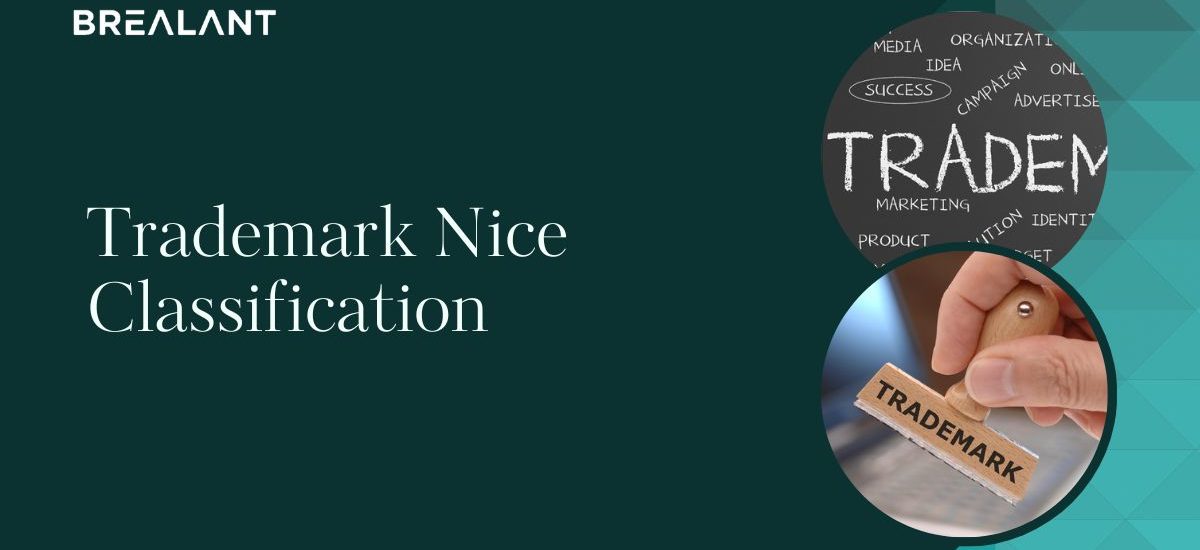In today’s fast-paced business landscape, where brands are vying for attention and recognition, trademarks have emerged as invaluable assets. A well-protected trademark not only differentiates your products and services from competitors but also builds a loyal customer base. But, have you ever wondered how to navigate the intricate labyrinth of trademark categorization? That’s where the magic of Trademark Nice Classification comes into play, guiding you towards optimal trademark protection with pinpoint accuracy.
Understanding Trademark Nice Classification
The World Intellectual Property Organization (WIPO) defines the Nice Classification on its website as: “The Nice Classification (NCL), established by the Nice Agreement (1957), is an international classification of goods and services applied for the registration of marks. The 2019 version of the eleventh edition of the NCL came into force on January 1, 2019.”
Trademark Nice Classification is like a well-organized library for trademarks, neatly categorizing goods and services into classes based on their nature and purpose. This globally recognized classification system, established by the Nice Agreement, streamlines the trademark registration process by providing a standardized framework for applicants and examiners. Essentially, it’s a roadmap that ensures your trademark’s legal protection aligns perfectly with your business activities.
The Nice Classification system consists of 45 classes, each representing a distinct category of goods and services. Let’s explore a few of these classes and their significance:
Here are all 45 Nice Classes along with a brief description of the types of goods and services they encompass:
Classes 1-34: Goods
- Class 1: Chemicals: Chemical substances used in various industries, including agriculture, science, and manufacturing.
- Class 2: Paints: Paints, coatings, varnishes, and related products for decoration and protection.
- Class 3: Cosmetics and Cleaning Preparations: Skincare products, makeup, perfumes, soaps, and cleaning agents.
- Class 4: Lubricants and Fuels: Oils, greases, and fuels for industrial and automotive use.
- Class 5: Pharmaceuticals: Medicines, pharmaceutical preparations, and veterinary products.
- Class 6: Metal Goods: Metal products like hardware, locks, safes, and small items made of metal.
- Class 7: Machines and Machine Tools: Industrial machines, tools, and equipment for various purposes.
- Class 8: Hand Tools: Tools for construction, gardening, and crafts.
- Class 9: Electrical and Scientific Apparatus: Electrical and electronic devices, scientific instruments, and appliances.
- Class 10: Medical and Veterinary Apparatus: Medical instruments, dental equipment, and veterinary supplies.
- Class 11: Environmental Control Apparatus: Devices for heating, cooling, and air conditioning.
- Class 12: Vehicles: Land vehicles, aircraft, watercraft, and their parts and accessories.
- Class 13: Firearms: Firearms, ammunition, explosives, and related goods.
- Class 14: Precious Metals and Stones: Precious metals, gemstones, and jewelry.
- Class 15: Musical Instruments: Musical instruments and related accessories.
- Class 16: Paper Goods and Printed Matter: Paper products, stationery, books, and printed materials.
- Class 17: Rubber Goods: Rubber products like tires, hoses, and belts.
- Class 18: Leather Goods: Leather products such as bags, wallets, and belts.
- Class 19: Non-metallic Building Materials: Construction materials like bricks, tiles, and cement.
- Class 20: Furniture and Articles Not Otherwise Classified: Furniture and furnishings for homes and offices.
- Class 21: Housewares and Glass: Household goods made of glass, porcelain, or ceramics.
- Class 22: Cordage and Fibers: Ropes, nets, and fibers for textiles.
- Class 23: Yarns and Threads: Yarns and threads for textiles and sewing.
- Class 24: Fabrics: Textile materials and fabrics for clothing and furnishings.
- Class 25: Clothing: Apparel, footwear, headgear, and related accessories.
- Class 26: Fancy Goods: Decorative items, novelties, and giftware.
- Class 27: Floor Coverings: Carpets, rugs, and other floor coverings.
- Class 28: Toys and Sporting Goods: Toys, games, and sporting equipment.
- Class 29: Meats and Processed Foods: Meat, fish, poultry, and processed food products.
- Class 30: Staple Foods: Food items like grains, bread, and pasta.
- Class 31: Natural Agricultural Products: Fresh fruits, vegetables, and plants.
- Class 32: Light Beverages: Non-alcoholic beverages like sodas and fruit juices.
- Class 33: Wines and Spirits: Alcoholic beverages like wines, spirits, and liquors.
- Class 34: Tobacco Products: Tobacco, cigars, cigarettes, and smoking accessories.
Classes 35-45: Services
- Class: 35: Advertising and Business Services: Advertising, marketing, business management, and consultancy.
- Class 36: Insurance and Financial Services: Insurance, banking, and financial services.
- Class 37: Construction and Repair Services: Construction, repair, and installation services.
- Class 38: Telecommunications Services: Communication services, including telephone and internet services.
- Class 39: Transportation and Storage Services: Transport, travel, and storage services.
- Class 40: Treatment of Materials Services: Treatment of materials, such as recycling and water treatment.
- Class 41: Education and Entertainment Services: Educational, training, and entertainment services.
- Class 42: Computer and Scientific Services: Scientific research, computer programming, and IT services.
- Class 43: Hotels and Restaurants Services: Accommodation, hotel, and restaurant services.
- Class 44: Medical and Beauty Services: Medical, health, and beauty services.
- Class 45: Personal and Legal Services: Legal services, personal and social services.
The Power of Precision: Why Nice Classification Matters
Imagine you’ve meticulously designed a logo and coined a catchy brand name for your boutique coffee shop. You’re all set to apply for trademark protection, but without proper classification, your application could run into roadblocks. This is where the importance of Nice Classification shines.
When you align your trademark with the appropriate class, you’re not merely protecting your brand name or logo. You’re safeguarding your unique blend of roasted beans (Class 30), the aroma-filled mugs you sell (Class 21), and even the cozy ambiance of your café (Class 43). In short, every facet that constitutes your brand experience can be precisely shielded against infringement.
Nice Classification: Tips and Tricks
- Thorough Research: Dive into the Nice Classification catalog and explore the vast array of classes. Identify the ones that most accurately encompass your goods or services.
- Granularity Matters: Don’t be afraid to get specific. The more precise your classification, the stronger your trademark protection.
- Stay Updated: Keep track of any changes or updates to the Nice Classification system. Staying informed ensures your trademarks remain well-aligned with your evolving business.
- Expert Guidance: While Nice Classification is a valuable tool, seeking guidance from intellectual property (IP) law professionals can be a game-changer. They’re the compass that helps you navigate this intricate terrain with finesse.
Empowering Your Trademark Journey with Brealant: Your Trusted IP Law Firm
Introducing Brealant – Your Beacon in the World of Intellectual Property. Our seasoned team of legal experts specializes in trademark law, offering tailor-made solutions that ensure your brand is not just protected, but thrives. From pinpointing the perfect Nice Classification for your trademarks to providing comprehensive legal counsel, Brealant is your partner in securing a rock-solid foundation for your brand’s success.
Elevate your brand’s potential today with Brealant by your side. Let’s transform your trademarks into unbreakable shields of distinction, standing tall amidst the competitive landscape.
In a world where trademarks are the heartbeats of businesses, Nice Classification is the compass, and Brealant is your North Star – guiding you towards a horizon brimming with endless possibilities.
Conclusion
Trademark Nice Classification is not just a bureaucratic formality; it’s a strategic tool that empowers businesses to carve out their unique identity in the marketplace. By utilizing this system effectively, you’re not only safeguarding your brand but also building a legacy that resonates with customers across the globe. So, embark on this journey of precision, and let your trademarks shine under the protective umbrella of Trademark Nice Classification, with the unwavering support of Brealant, your trusted partner in IP law.










